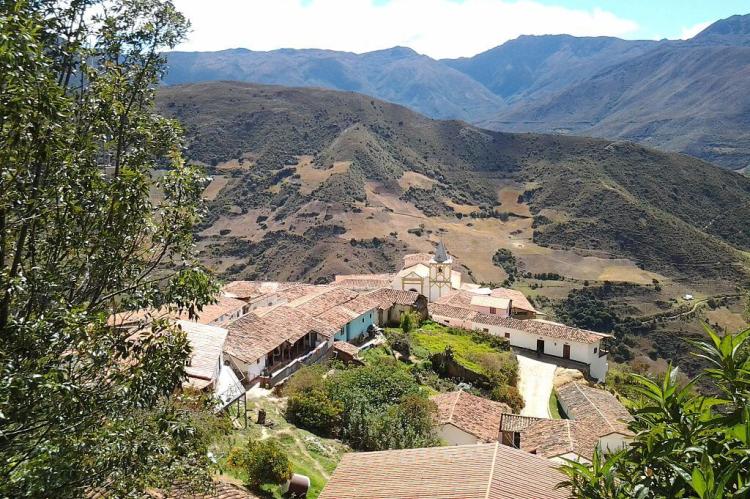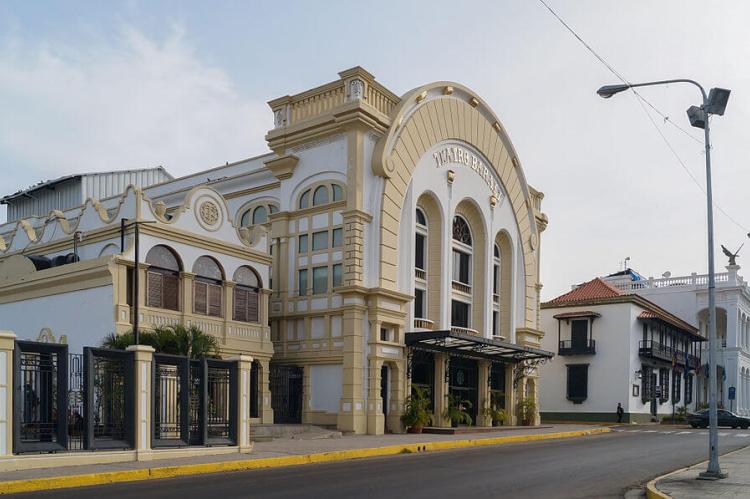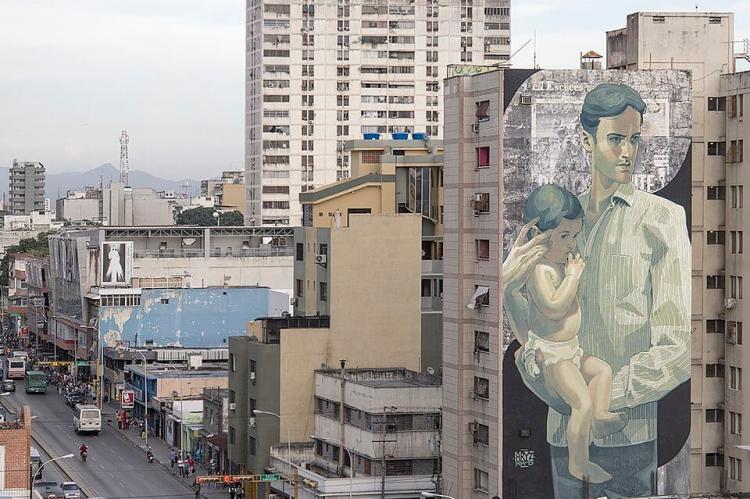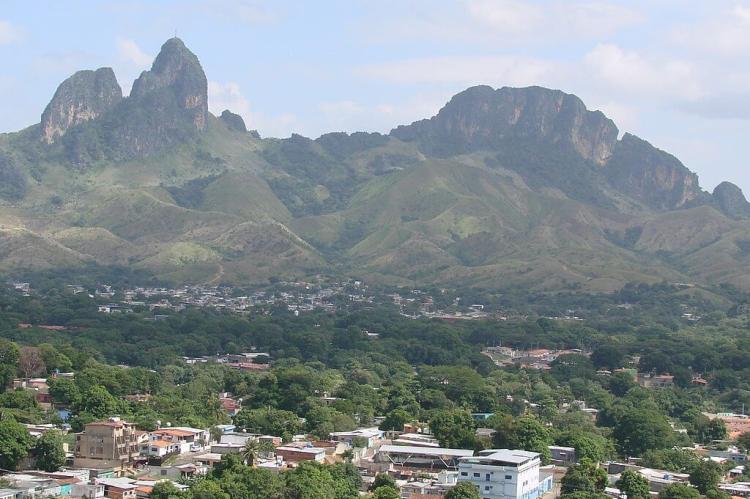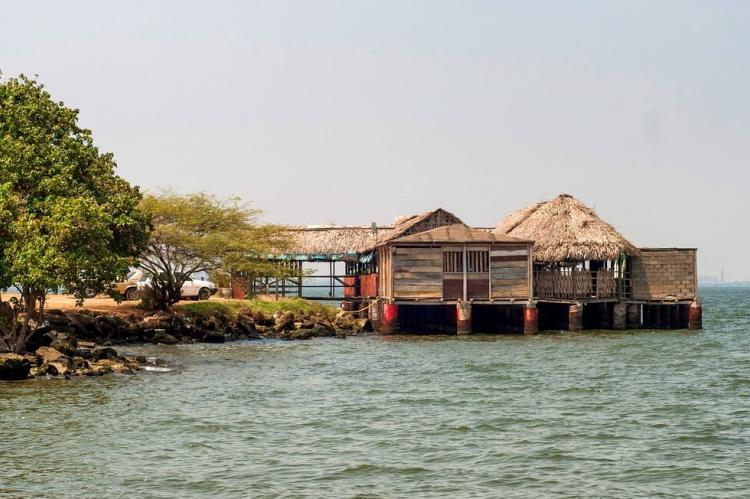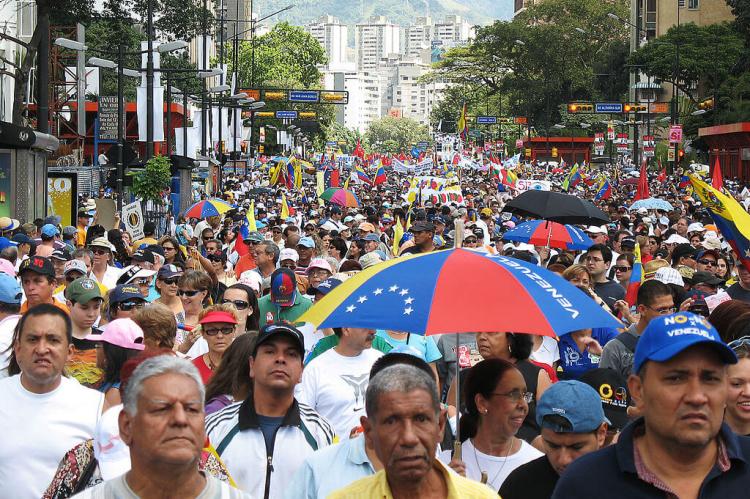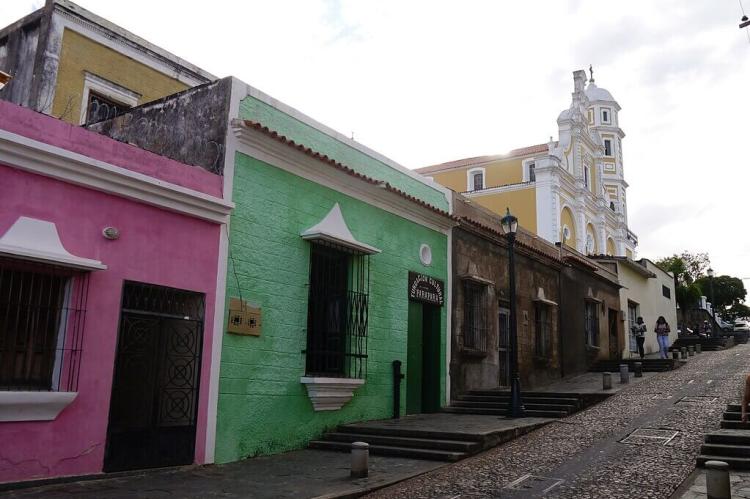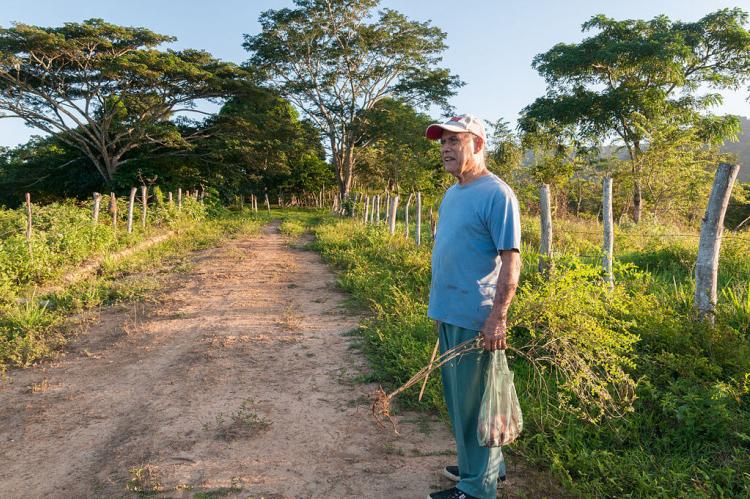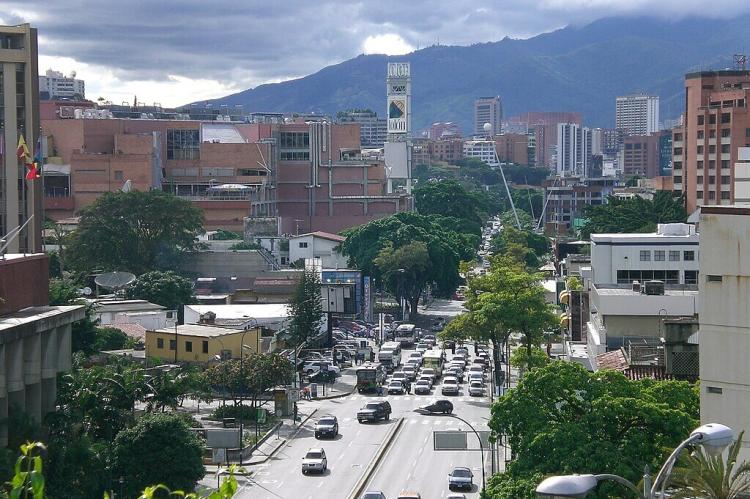Venezuela: Cultural Landscape
Venezuela has a rich and diverse cultural landscape that reflects a blend of indigenous, Spanish, African, and Caribbean influences. The country's cultural expressions are shaped by its history, resulting in a fascinating and complex mix of traditions that continue to evolve today.
The Cultural Landscape of Venezuela
Venezuela boasts a rich and diverse cultural landscape that blends indigenous, Spanish, African, and Caribbean influences. The country's cultural expressions are shaped by its unique history, resulting in a fascinating and complex mix of traditions that continue to evolve. From the vibrant art and music to the mouth-watering cuisine and lively celebrations, every aspect of Venezuela's culture embodies a distinct identity deeply rooted in its heritage.
-
Indigenous Heritage: Venezuela has a significant indigenous population of various ethnic groups, such as the Wayuu, Warao, Pemón, and Yanomami. Indigenous cultures have contributed to the country's folklore, spiritual beliefs, handicrafts, and agricultural practices.
-
Spanish Colonial Influence: Spain colonized Venezuela in the 16th century, leaving a lasting impact on its language (Spanish is the official language), architecture, religion (predominantly Roman Catholic), and social structures.
-
Afro-Venezuelan Traditions: African traditions and cultural elements brought by enslaved Africans have strongly influenced Venezuelan culture. Afro-Venezuelan communities have preserved their traditional music, dance, folklore, and religious practices, such as Santeria and the cult of María Lionza.
-
Music: Venezuela has a vibrant music scene with diverse genres. Traditional Venezuelan music includes joropo, a lively dance and music style, and gaita, a genre popular during Christmas festivities. The country has also produced internationally recognized musicians, such as Simón Díaz and the folk group Serenata Guayanesa.
-
Visual Arts: Venezuelan artists have made notable contributions to the visual arts. Artists like Armando Reverón and Carlos Cruz-Diez have gained international recognition for their innovative painting and kinetic approaches. The country also hosts the Museum of Contemporary Art of Caracas, showcasing local and international contemporary artwork.
-
Literature: Venezuela has a rich literary tradition with renowned authors like Andrés Bello, Rómulo Gallegos, and Arturo Uslar Pietri. Venezuelan literature explores national identity, social issues, and the human experience.
-
Gastronomy: Venezuelan cuisine reflects its diverse cultural influences. Traditional dishes include arepas (cornmeal patties), pabellón criollo (a national dish consisting of rice, beans, shredded meat, and plantains), and hallacas (similar to tamales). The country is also known for its wide variety of tropical fruits and refreshing beverages.
-
Festivals: Venezuela celebrates numerous colorful and vibrant festivals throughout the year. The most famous is the Carnival, which features lively parades, music, dance, and elaborate costumes. Other important festivals include the Feast of Corpus Christi, Semana Santa (Holy Week), and Christmas celebrations.
-
Sports: Baseball is a popular sport in Venezuela, and the country has produced many professional players who have excelled in Major League Baseball. Football (soccer) is also widely followed, and Venezuela has participated in international tournaments.
-
Natural and Cultural Landmarks: Venezuela has landmarks like Angel Falls (the world's highest waterfall) and the Orinoco Delta. Additionally, historical sites like Coro's colonial city and the breathtaking landscapes of the Gran Sabana offer a glimpse into Venezuela's cultural and natural heritage.
Contemporary Influences on Venezuelan Culture
Contemporary influences significantly impact Venezuelan culture, shaping its dynamics and expressions in a globalized era. From the far-reaching effects of globalization to the transformative role of the Internet and social media, the cultural dissemination of the Venezuelan diaspora, and the profound effects of the ongoing political and economic crisis, all these factors contribute collectively to the ever-evolving landscape of Venezuelan cultural identity.
-
Globalization: Venezuela is a globalized country, and various cultures have influenced its culture worldwide. This is evident in the country's music, food, fashion, and other cultural expressions.
-
Internet and Social Media: The Internet and social media have profoundly impacted Venezuelan culture. These technologies have made it easier for Venezuelans to connect with people from all over the world, and they have also given Venezuelans a platform to express themselves and share their culture with others.
-
Venezuelan Diaspora: The Venezuelan diaspora is a large and growing community. Venezuelans who have left the country have taken their culture with them, and they have helped to spread Venezuelan culture to new parts of the world.
-
Political and Economic Crisis: The political and economic crisis in Venezuela has significantly impacted the country's culture. The situation has led to widespread poverty, hunger, and violence. This has hurt the country's cultural institutions and the morale of the Venezuelan people.
Challenges Facing Venezuelan Culture
Venezuelan culture remains vibrant and dynamic despite its challenges. The people of Venezuela are known for their resilience, and they continue to create and celebrate their culture. Various organizations are working hard to preserve and promote Venezuelan culture, and there is growing awareness of the importance of cultural diversity. Although the future of Venezuelan culture is uncertain, it is evident that Venezuelans are determined to preserve their culture and pass it on to future generations.
-
Political and Economic Crisis: The political and economic crisis in Venezuela has significantly impacted the country's culture. The situation has led to widespread poverty, hunger, and violence. This has hurt the country's cultural institutions and the morale of the Venezuelan people.
-
Mass Migration: The political and economic crisis has also led to mass migration. Millions of Venezuelans have left the country in search of a better life. This has significantly impacted the country's cultural landscape, as many of the country's most talented artists, musicians, and intellectuals have left the country.
-
Nationalism: The political and economic crisis has led to a rise in nationalism in Venezuela. This has led to a backlash against foreign influences on Venezuelan culture.
-
Media Censorship: The government of Venezuela has cracked down on the media, censoring news and information that is critical of the government. This has made it difficult for Venezuelans to access information about their culture and to express themselves freely.
Cultural Geography of Venezuela
Largest Cities / Metro Areas
Ranked by population estimate* (2022):
-
Greater Caracas (5,243,000): Greater Caracas, also known as the Metropolitan Region of Caracas, is Venezuela's capital and largest city. It is located in the northern part of the country, within the Caracas Valley of the Venezuelan coastal mountain range (Cordillera de la Costa). The valley is close to the Caribbean Sea, separated from the coast by a steep 2,200 m (7,200 ft) mountain range, Cerro El Ávila; there are more hills and mountains to the south. Greater Caracas is Venezuela's major economic, cultural, and political center. The city has several universities, museums, theaters, and industries, including oil refining, manufacturing, and tourism.
-
Maracaibo (4,163,000 / 4,937,000): Maracaibo is the second-largest city in Venezuela, after Caracas, and the capital of Zulia State. It is located on the western shore of Lake Maracaibo in northwestern Venezuela. The city is a significant economic hub, focusing on oil and gas, manufacturing, and agriculture. Maracaibo is also a popular tourist destination, with several historical and cultural attractions, including the Maracaibo Cathedral, the Museum of Zulia, and the Maracaibo Zoo.
-
Valencia (2,585,000): Valencia, the capital city of Carabobo State, is located in the central-northwestern part of Venezuela, about 172 km (107 mi) east of Caracas. The city is a central economic hub focusing on manufacturing and industry. Valencia is also a popular tourist destination, with several historical and cultural attractions, including the Cathedral of Valencia, the Museum of Fine Arts, and the Parque del Lago.
-
Barquisimeto (1,349,000 / 1.921.000): Barquisimeto is the capital of Lara State, located in the central-western part of the country, about 300 km (190 mi) west of Caracas. The city is a significant economic hub focusing on manufacturing, agriculture, and tourism. Barquisimeto is a popular cultural center with several museums, theaters, and art galleries.
-
Ciudad Guayana (1,231,000 / 1,746,000): Ciudad Guayana is a city in Bolívar State, Venezuela. It is located on the south bank of the Orinoco River, which is joined by its main tributary, the Caroní River. The city was officially founded in 1961 by the unification of the two former settlements of San Félix and Puerto Ordaz. Ciudad Guayana is a major industrial center that produces steel, aluminum, and hydroelectric power. The city is also a popular tourist destination, with several natural attractions, including the Cachamay Falls and the Macagua Dam.
-
Maracay (1,178,000 / 1,492,000): Maracay is the capital of Aragua State, located in the central-northwestern part of the country, about 70 km (43 mi) southwest of Caracas. The city is a significant economic hub focusing on manufacturing, oil refining, agriculture, and tourism. Maracay is known for its military academy, zoo, and parks. The city is home to several universities, museums, and theaters.
-
San Cristóbal (977,000 / 1,359,000): San Cristóbal is the capital city of Táchira State, located in the western Andes Mountains, about 56 km (35 mi) from the Colombian border. The city is a central economic hub focusing on agriculture, manufacturing, and tourism. San Cristóbal is also a popular cultural center with some museums, theaters, and art galleries.
-
Maturín (754,000 / 1,150,000): Maturín is the capital city of Monagas State, located in the northeastern part of the country, about 300 km (190 mi) east of Caracas. The city is a significant economic hub focusing on agriculture, manufacturing, and tourism. Maturín is a popular cultural center with museums, theaters, and art galleries.
-
Puerto La Cruz (735,000 / 970,000): Puerto La Cruz is a city in Anzoátegui State on the southern shore of the Caribbean Sea, about 172 km (107 mi) east of Caracas. It is the capital of the Anzoátegui state and is a popular tourist destination known for its beautiful beaches, vibrant nightlife, and seafood. The city is a central economic hub focusing on tourism, fishing, and oil refining. Puerto La Cruz is a popular cultural center with several museums, theaters, and art galleries.
-
Cumaná (923,000): Cumaná is the capital of Sucre State, Venezuela. It is located on the Caribbean coast, about 402 km (250 mi) east of Caracas. Cumaná was founded in 1521 by Spanish conquistadors and is the oldest continuously inhabited European settlement on the South American mainland. It is also the birthplace of Antonio José de Sucre, an important figure in the Latin American independence movement and Bolivia's first president. The city is a central economic hub focusing on tourism, fishing, and oil refining. Cumaná is a popular cultural center with museums, theaters, and art galleries.
* These figures are estimates. The population of Venezuela has been declining in recent years due to several factors, including the country's economic crisis. As a result, the actual population of these cities may be lower.
Administrative Divisions
Venezuela is a federation of 23 states and a capital district. Administratively, the states are divided into 335 municipalities, subdivided into parishes. The country can be further divided into nine administrative regions, some corresponding to climatic and biogeographical regions, delineated for regional administration.
The Capital District is a distinct federal entity in Venezuela. It encompasses the capital city of Caracas and its surrounding metropolitan area.
-
Capital District (Caracas): Caracas is the country's political, economic, and cultural center. It houses government institutions, major financial institutions, and cultural landmarks and is the country's largest urban hub. The Capital District is characterized by its bustling city life, diverse population, and the presence of government buildings, including the presidential palace, government ministries, and the National Assembly.
In addition, a special territory known as the Federal Dependencies encompasses most of the country's offshore islands not already integrated into an existing state.
-
Federal Dependencies (El Gran Roque): The Federal Dependencies of Venezuela is a special administrative region. This region comprises numerous islands, islets, and atolls scattered throughout the Caribbean Sea. These islands are largely uninhabited, except for some military and scientific outposts. Some of the most well-known islands in this region include La Tortuga, La Orchila, and Los Roques.
The 23 grouped states, along with their capital city in parentheses and a brief description, are as follows:
Andean Region
-
Barinas (Barinas): Barinas, located in the western part of Venezuela, is an agricultural state known for producing rice, maize, and cattle farming. It has a rich cultural heritage.
-
Mérida (Mérida): Mérida, located in the Andes Mountains, is known for its stunning natural landscapes, including the Sierra Nevada National Park. It's a popular destination for outdoor enthusiasts.
-
Táchira (San Cristóbal): Táchira is in the Venezuelan Andes and shares a border with Colombia. It's known for its high-altitude towns, beautiful landscapes, and agricultural activities.
-
Trujillo (Trujillo): Trujillo, also located in the Andes Mountains, is known for its picturesque towns and natural beauty. It's an important agricultural region.
Capital Region
-
Miranda (Los Teques): Miranda is in the north-central part of Venezuela and surrounds Caracas. It's an urban and suburban area with a mix of industry and commerce.
-
Vargas (La Guaira): Vargas is a coastal state adjacent to the Capital District known for its beautiful beaches and tourism industry. It includes the port city of La Guaira.
Central Region
-
Aragua (Maracay): Aragua is in the north-central part of the country and is known for its agricultural activities, including the cultivation of coffee, cacao, and sugar cane. It's also home to beautiful national parks.
-
Carabobo (Valencia): Carabobo is an important industrial and transportation hub in the north-central part of Venezuela. It's known for its historical significance in Venezuela's independence.
-
Cojedes (San Carlos): Cojedes, located in the central part of the country, is an agricultural state known for livestock farming and the production of rice and sorghum.
Central-Western Region
-
Falcón (Coro): Falcón is located in the northwestern part of Venezuela and is known for its beautiful beaches along the Caribbean coast. It's also home to historic towns and colonial architecture.
-
Lara (Barquisimeto): Lara is in the north-central part of Venezuela and is known for its vibrant culture, music, and festivals. It's also an important agricultural and industrial region.
-
Portuguesa (Guanare): Portuguesa, in the western part of Venezuela, is an agricultural state known for its rice, sorghum, and sugar cane production.
-
Yaracuy (San Felipe): Yaracuy, in the north-central part of the country, is an agricultural state known for its production of fruits, especially oranges and papayas.
Eastern Region
-
Anzoátegui (Barcelona): Anzoátegui is situated along the Caribbean coast in the northeastern part of Venezuela. It's an important industrial and commercial region with bustling cities and beautiful beaches.
-
Monagas (Maturín): Monagas, in the northeastern part of the country, is known for its oil production and agriculture, including cotton and cocoa farming.
-
Sucre (Cumaná): Sucre is located in the northeastern part of Venezuela and has a diverse geography, including coastal areas, mountains, and plains. It's known for its historical significance in Venezuela's independence.
Guyana Region
-
Bolívar (Ciudad Boliver): Bolívar is located in the southeastern part of Venezuela and is known for its natural beauty, including Angel Falls, the world's highest waterfall. It's a mining and tourism hub.
-
Amazonas (Puerto Ayacucho): Amazonas is located in southern Venezuela and is characterized by its lush rainforests, rivers, and indigenous communities. It's known for its biodiversity and natural beauty.
-
Delta Amacuro (Tucupita): Delta Amacuro is in northeastern Venezuela and is known for its vast delta region formed by the Orinoco River. It's rich in biodiversity and has a significant indigenous population.
Insular Region
-
Nueva Esparta (La Asunción): Nueva Esparta is an island state in the Caribbean Sea, including Margarita Island. It's a popular tourist destination known for its beaches and tourism industry.
Llanos Region
-
Apure (San Fernando de Apure): Apure is located in the southwestern part of Venezuela and is known for its vast plains, the Llanos. It's an agricultural and cattle-raising region.
-
Guárico (San Juan de los Morros): Guárico, in the central part of the country, is primarily an agricultural state focusing on cattle ranching, sugarcane, and rice production.
Zulian Region
-
Zulia (Maracaibo): Zulia is in the northwest of Venezuela and is an important oil-producing region. Maracaibo, its capital, is the second-largest city in the country and a central economic hub.
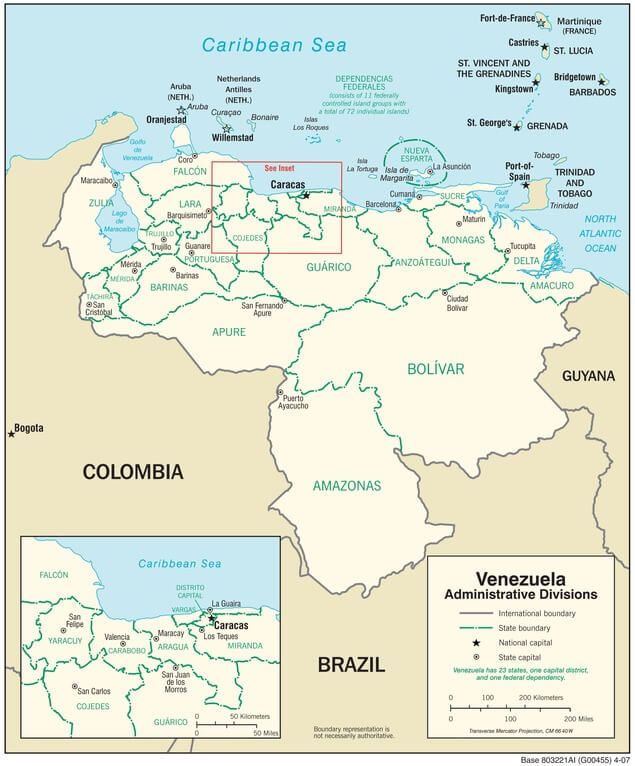
Venezuela administrative map
Border Dispute
Guayana Esequiba
Guayana Esequiba, spanning approximately 159,500 square kilometers (61,600 square miles), is at the core of a prolonged territorial dispute between Venezuela and Guyana. Situated to the west of the Essequibo River, this region falls under the administration and control of Guyana.
Despite Guyana's governance, Venezuela maintains historical claims to the territory, presenting a diplomatic challenge that has endured for decades. Guyana's control is rooted in the 1899 Paris Arbitral Award; however, Venezuela continues to contest this arrangement.
The dispute regained prominence in December 2023 when Venezuela rekindled its claim to the territory. This resurgence coincided with the discovery of substantial oil and gas reserves, estimated at around 11 billion barrels, off the coast of Guyana.
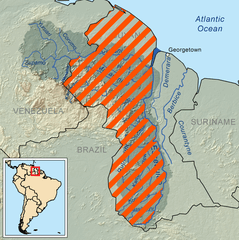
Map of the Guayana Esequiba: the orange-striped area constitutes the area claimed by Venezuela.
Geographic Regions (Zones)
Venezuela has four distinct geographical regions:
-
Venezuelan Highlands: the northeasternmost extension of the Andes Mountains, border the Caribbean Sea
-
Maracaibo Lowlands: in the northwest, relatively flat and surrounded by mountains
-
Orinoco Plains: a lowland grassland region in central Venezuela known as Los Llanos
-
Guiana Highlands: located in southern Venezuela, east of the Orinoco River
A fifth geographical region could be added:
-
Venezuelan Caribbean: the coastal mainland states and the Insular Region, comprising the Venezuelan Caribbean islands
See more: Natural Landscape of Venezuela
Historical, Cultural, and Natural Landmarks
Venezuela offers a wealth of historical, cultural, and natural landmarks. Here are some notable examples, separated by region or zone:
Venezuelan Highlands
The Venezuelan Highlands, also known as the Venezuelan Andes or the Cordillera de Mérida, is a mountainous region in the western part of Venezuela. Its stunning landscapes, towering peaks, and diverse ecosystems characterize it. Here are some of the main attractions, landmarks, and protected areas in the Venezuelan Highlands:
-
Sierra Nevada National Park: This national park is a UNESCO World Heritage site and one of the most significant protected areas in the region. It is home to Pico Bolívar, the highest peak in Venezuela, standing at an impressive 4,978 meters (16,332 feet). The park offers breathtaking scenery, glaciers, lakes, and opportunities for hiking, camping, and birdwatching.
-
Mérida: Known as the "City of Eternal Spring," Mérida is the capital of Mérida State and a popular destination in the Venezuelan Highlands. The city is famous for its colonial architecture, cable car system (the world's highest and longest cable car), and vibrant cultural scene. Visitors can explore historic sites and museums and enjoy outdoor activities like trekking and paragliding.
-
Jaji: This picturesque Andean village is known for its well-preserved colonial architecture, cobblestone streets, and colorful houses. It offers a charming glimpse into the region's cultural heritage and is surrounded by stunning mountain landscapes.
-
Laguna de Mucubají: Located in the Mérida State, this beautiful high-altitude lake is surrounded by scenic paramo landscapes. It is part of the Sierra Nevada National Park and offers opportunities for hiking, photography, and enjoying the tranquility of nature.
-
Andean Páramo: The páramo ecosystem is a unique high-altitude grassland in the Venezuelan Highlands. It is characterized by its distinctive vegetation, including frailejones (giant rosette plants) and unique bird species. Visitors can explore various paramo areas, such as Páramo La Culata and Páramo El Tamá, which offer hiking and wildlife observation opportunities.
Maracaibo Lowlands
The Maracaibo Lowlands, also known as the Maracaibo Basin, is located in northwestern Venezuela, primarily surrounding Lake Maracaibo. While its vast plains and wetlands mainly characterize it, there are several attractions, landmarks, and protected areas worth mentioning:
-
Lake Maracaibo: As the largest lake in South America and one of the oldest on Earth, Lake Maracaibo is a prominent feature of the region. It offers scenic beauty and is known for its unique atmospheric phenomenon called the Catatumbo lightning, where lightning occurs frequently and consistently in the area.
-
Baralt Theater: Located in Maracaibo, the Baralt Theater is a historic cultural landmark. Built in the neoclassical style in the 19th century, the theater is renowned for its stunning architecture and hosts various performing arts events, including plays, concerts, and dance performances.
-
Catatumbo Swamp: This protected area is part of the larger Ciénagas del Catatumbo Biosphere Reserve. It encompasses a vast wetland ecosystem with diverse flora and fauna, including aquatic plants, birds, and reptiles. Visitors can explore the area through boat tours, observing the rich biodiversity and enjoying the tranquility of the swamp.
-
Rafael Urdaneta Bridge: Spanning across Lake Maracaibo, the Rafael Urdaneta Bridge is an engineering marvel and a significant landmark in the region. It is one of the longest and highest cable-stayed bridges in the world, connecting Maracaibo with other parts of Venezuela.
-
Sierra de Perijá: While not exclusively part of the Maracaibo Lowlands, the Sierra de Perijá mountain range extends into the region. It is known for its pristine forests, diverse wildlife, and indigenous communities. The Sierra de Perijá offers opportunities for hiking, birdwatching, and experiencing the cultural heritage of the local communities.
-
Medanos de Coro National Park: Although not directly located in the Maracaibo Lowlands region, Medanos de Coro National Park is within driving distance. This protected area showcases magnificent dunes, providing a unique desert-like experience in Venezuela. Visitors can partake in sandboarding, enjoy the surreal landscapes, and appreciate the diverse flora and fauna adapted to the arid conditions.
Orinoco Plains
The Orinoco Plains, also known as the Llanos, is a vast region in central and eastern Venezuela, primarily encompassing the floodplains surrounding the Orinoco River. This region has expansive grasslands, wetlands, and diverse wildlife. Here are some of the main attractions, landmarks, and protected areas in the Orinoco Plains:
-
Hato El Cedral: This privately owned cattle ranch is renowned for its conservation and ecotourism activities. Hato El Cedral allows visitors to observe wildlife such as capybaras, caimans, anacondas, and various bird species. Visitors can enjoy horseback riding, wildlife safaris, and birdwatching tours.
-
Canaima National Park: While not exclusively part of the Orinoco Plains, Canaima National Park extends into the region. This UNESCO World Heritage site is home to Angel Falls, the world's highest uninterrupted waterfall, and offers stunning landscapes of tepuis (tabletop mountains), rivers, and dense forests. Visitors can explore the park through organized tours, including boat trips to Angel Falls and treks to the base of the falls.
-
Capanaparo River: The Capanaparo River is a significant tributary of the Orinoco River, flowing through the plains. It provides opportunities for fishing, canoeing, and wildlife observation. The river is known for its diverse fish species, including the famous peacock bass.
-
Guácharo Cave National Park: Located in the southern part of the Orinoco Plains, this national park is home to the Cueva del Guácharo, a fascinating limestone cave. The cave is inhabited by thousands of oilbirds (guácharos), nocturnal birds known for their unique adaptations and echolocation. Guided tours allow visitors to explore the cave system and observe these intriguing creatures.
-
Los Llanos Wildlife Refuge: This protected area is dedicated to conserving the Orinoco crocodile, an endangered species. It offers opportunities for guided tours and educational programs to learn about conservation efforts and observe the crocodiles in their natural habitat.
-
El Calvario: Located in San Fernando de Apure, El Calvario is a historic church and religious landmark. It is known for its colonial architecture and serves as a focal point for religious processions and events in the region.
Guiana Highlands
The Guiana Highlands, also known as the Guayana Shield or Gran Sabana, is a stunning region in southeastern Venezuela. It is characterized by its unique tabletop mountains called tepuis, vast savannahs, pristine rivers, and dense rainforests. Here are some of the main attractions, landmarks, and protected areas in the Guiana Highlands:
-
Angel Falls: Located in Canaima National Park, Angel Falls is the world's highest uninterrupted waterfall, plunging from the Auyán Tepui. It is a breathtaking natural wonder and a must-visit attraction for its awe-inspiring beauty. Visitors can take boat trips or trek to the base of the falls to witness its grandeur up close.
-
Roraima Tepui: This iconic tabletop mountain is a UNESCO World Heritage site located in the tri-border areas of Venezuela, Brazil, and Guyana. It is a popular trekking destination, attracting adventurous travelers who want to explore its unique landscapes, endemic plant species, and stunning views from the summit.
-
Canaima National Park: Spanning across the Guiana Highlands and the Orinoco Plains, Canaima National Park is a UNESCO World Heritage site. It is home to numerous tepuis, including Mount Roraima and Angel Falls. The park offers diverse ecosystems, including savannahs, rainforests, rivers, and lagoons. Visitors can enjoy activities like boat trips, hiking, wildlife spotting, and cultural experiences with indigenous communities.
-
Kukenan Tepui: Situated near Mount Roraima, Kukenan Tepui is another impressive tabletop mountain known for its unique rock formations and scenic beauty. It is a challenging trekking destination, allowing adventurous hikers to explore its remote and pristine landscapes.
-
Kavac: This small indigenous village is located within the Gran Sabana region and is a gateway to exploring nearby attractions, including Kavac Cave. Visitors can experience the local culture, learn about traditional customs, and embark on tours to the cave, where they can witness mesmerizing sunlight filtering through the caverns.
-
Imataca Forest Reserve: While not exclusively part of the Guiana Highlands, the Imataca Forest Reserve extends into the region. This protected area covers vast tracts of pristine rainforest, home to diverse plant and animal species. It offers opportunities for ecotourism, birdwatching, and exploring the region's rich biodiversity.
Venezuelan Caribbean
These are just a few attractions, landmarks, and protected areas in the Venezuelan Caribbean. With its beautiful beaches, crystal-clear waters, and lush rainforests, the Venezuelan Caribbean is popular with tourists and nature lovers.
-
Margarita Island (Isla de Margarita): Playa El Yaque is a beach famous for its windsurfing and kiteboarding opportunities. Castillo San Carlos de Borromeo is a historical fortress that offers panoramic views of the island. Playa El Agua is one of the island's most famous and picturesque beaches. La Restinga National Park is a mangrove swamp and marine park with diverse ecosystems.
-
Los Roques Archipelago: The main inhabited island, Gran Roque, offers local charm and a starting point for exploring the archipelago. El Gran Roque Beach includes a tranquil beach with fishing boats and a relaxed atmosphere. Cayo de Agua is a stunning sandbar with crystal-clear waters, ideal for swimming and snorkeling. Francisqui Island is known for its white sand beaches and turquoise waters.
-
Nueva Esparta State: La Asunción, the capital of Nueva Esparta, is known for its colonial architecture and historic sites. Juan Griego is a picturesque town with a colorful harbor and various local shops. Parque Nacional Cerro El Copey is a protected area covering part of Margarita Island, with hiking trails and diverse flora and fauna.
-
Los Aves Archipelago: Isla de Aves is a remote island known for its importance as a seabird nesting site. Cayo Bubi is a small cay with beautiful beaches and clear waters.
-
La Tortuga Island (Isla La Tortuga): La Tortuga is known for its untouched white sand beaches and calm waters. The surrounding waters are rich in marine life, making it a popular spot for underwater exploration.
-
Los Monjes Archipelago: These islets are characterized by unique rock formations, which attract divers and researchers interested in marine life.
-
Las Tetas de María Guevara: Las Tetas de María Guevara is known for its twin-peaked hills, offering a distinctive natural landmark off the coast.
-
Mochima National Park: Playa Colorada has red sands and clear waters. The lighthouse El Faro offers panoramic views of the park and the surrounding sea. Mochima National Park is home to diverse marine species and coral reefs, making it a popular destination for diving and snorkeling.
-
Turimiquire Wildlife Refuge (Refugio de Fauna Silvestre Turimiquire): A protected area with diverse ecosystems, including rainforests and cloud forests, offering opportunities for birdwatching and hiking.
-
Archipiélago Los Testigos: Known for its clear waters, coral reefs, and vibrant marine life, attracting divers and snorkelers.
